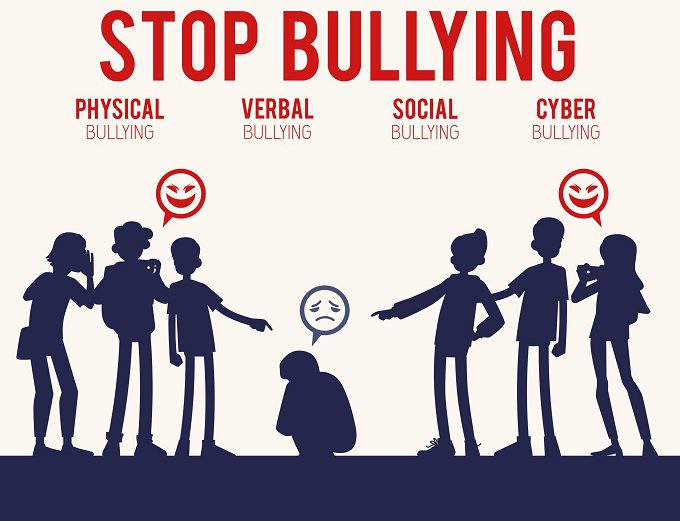Every day in our Nation’s schools, children are threatened, teased, taunted and tormented by schoolyard bullies. For some children, bullying is a fact of life that they are told to accept as a part of growing up. Those who fail to recognize and stop bullying practices as they occur actually promote violence, sending the message to children that might indeed makes right. Bullying often leads to greater and prolonged violence. Not only does it harm its intended victims, but it also negatively affects the climate of schools and the opportunities for all students to learn and achieve in school.
What Are the Signs of Bullying?
Unless your child tells you about bullying — or has visible bruises or injuries — it can be hard to know if it’s happening.
But there are some warning signs. Parents might notice kids: acting differently or seeming anxious not eating, not sleeping well, or not doing the things they usually enjoy seem moodier or more easily upset than usual avoiding certain situations (like taking the bus to school)
If you suspect bullying but your child is reluctant to open up, find ways to bring up the issue. For instance, you might see a situation on a TV show and ask, “What do you think of this?” or “What do you think that person should have done?” This might lead to questions like: “Have you ever seen this happen?” or “Have you ever experienced this?” You might want to talk about any experiences you or another family member had at that age.
Causes of bullying
The causes for bullying are varied, meaning any student can become a target, regardless of gender, race, religion, or socioeconomic status.
Some students who bully others have low self-esteem; however, there are others that have much higher self-confidence. Those with high self-confidence tend to lack compassion and empathy and can respond aggressively whenever they feel threatened.
In some cases, students’ need for attention and the desire to be perceived as brave and confident can cause them to bully. Students who experience issues at home, such as abuse and neglect or a divorce, can cause them to bully others due to despair, anger, or jealousy.
What can you do as a parent to prevent or deal with bullying?
- Encourage your child, youth, student or classmate to report bullying they either experience or witness to school staff such as teachers, counselors, principals or parents.
- Teach kids simple conflict resolution skills, the importance of using “I” language to express emotions and taking responsibility for your own actions, words, feelings – to promote empathy.
- Teach children that saying sorry is a strength.
- Encourage a bully to reflect on why she or he bullied, and how they would feel if the tables were turned and they were on the receiving end.
- Have a classroom discussion about respectful and acceptable language and behaviors.
Conclusion
School bullying is pervasive and most children will probably experience it at some stage, either as a witness, a victim, or by being a bully themselves. Large-scale surveys show that it happens across the world, though it can involve different behaviors and have different meanings in different countries. Telling someone usually helps, but this does depend upon how well it is acted upon by the school. Factors at both the individual and social level appear to be important causes of bullying. Family and peer relationships have been identified as important for children who bully, are victimized and are bully/victims. All three groups share some individual characteristics. Bullying is a group process involving the whole peer group, and can be more likely to occur in some classes or years than others. However, more research is needed to uncover the exact nature of the group processes involved, and how they interact with individual differences.

